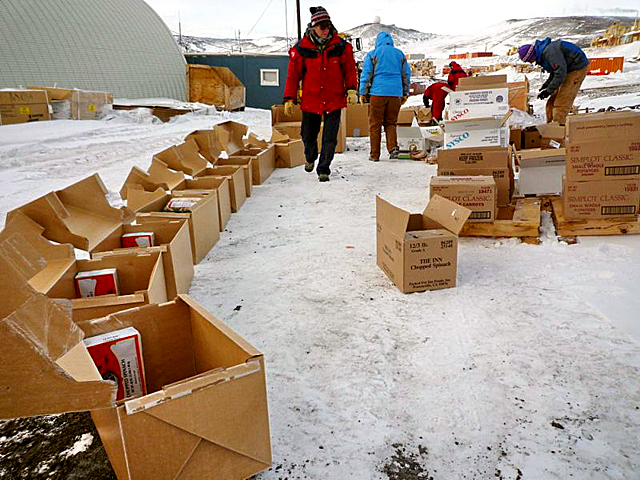Scambos: Recovery Lakes region was likely marine embayment in distant pastPage 2/2 - Posted April 24, 2009
Most of the scientific analysis is yet to come. Neumann and others on the team will use the ice core samples to conduct stable isotopic measurements. By studying the isotopic ratios of oxygen 16 and oxygen 18, for instance, researchers can figure out what the climate was doing at a particular time because different ratios indicate different types of climate. The chemistry will help the team calibrate the radar returns of the ice layers, a key step to nailing the snow accumulation rates in East Antarctica — one part of the equation to whether the ice sheet is overall losing or gaining mass. Loss of mass would indicate a rise in sea level. “The chemistry from the core helps because it tells you the accumulation rate at a point,” Neumann explained. “For example, how deep is the fallout from the 1960s above-ground nuclear testing? That information helps to calibrate the radar layers that intersect the core site. In Their Own Words
“If a radar layer is shallower, then it has had relatively less accumulation; a deep layer reflects relatively more accumulation. The information form the core lets you quantify the ‘relative’ statements above.” The scientists also took the opportunity to explore the Recovery Lakes, an area of at least four lakes at the head of one of the largest ice streams draining East Antarctica. Ranging in size from 600 to 1,500 square kilometers, at depths well below sea level, the lakes were likely part of a deep marine embayment millions of years ago when the ice sheet was much smaller, according to Scambos. “It was probably dynamic in the past,” he said. “In the distant future, if the Earth gets a great deal warmer, it would be dynamic again. I would prefer to think that we’ll stabilize climate change before we have to worry about this part of Antarctica disintegrating.” There is still a lot of uncertainty about what the Antarctic ice sheets may do in the future because so little of it has been measured, particularly compared to Greenland, according to Neumann. 
Photo Credit: Einar Johansen/NPI
Traverse team members organize provisions at McMurdo Station before the expedition begins.
“The uncertainties in Greenland are getting quite a lot smaller as we get more and more data about ice velocity, ice thickness and accumulation rate. It’s certainly negative [mass balance] and we know roughly how negative it is in Greenland,” he said. “Antarctica is a bit of a different story, because it is so much larger and there’s places with so much less data, such as in East Antarctica. “The physical insight is coming along and the model development is coming along, but I think it’s going to be a quite a while before we really have confidence in the large-scale predictive models of ice sheet change,” he added. More ground-based studies like the traverse would help to continue filling in the blank spots of the climate change map, according to the scientists. “Most of that uncertainty [about Antarctica] can be beaten down with more and more measurements of accumulation rates,” Neumann said. “The traverse system that the Norwegians have put together is fantastic, state-of-the-art. It’s the best in the world right now in terms of supporting a science crew over long distances,” Scambos said. “They essentially have a mobile, 12-person base that provides them relatively easy access to a large area. … [Queen Maud Land is] one of the least-explored areas of Antarctica, and I think that’s going to change, in part, thanks to this traverse system they’ve got.” NSF-funded research in this story: Tom Neumann, now at NASA Goddard Space Flight Center, Award No. 0538185 |



For USAP Participants |
For The Public |
For Researchers and EducatorsContact UsU.S. National Science FoundationOffice of Polar Programs Geosciences Directorate 2415 Eisenhower Avenue, Suite W7100 Alexandria, VA 22314 Sign up for the NSF Office of Polar Programs newsletter and events. Feedback Form |


